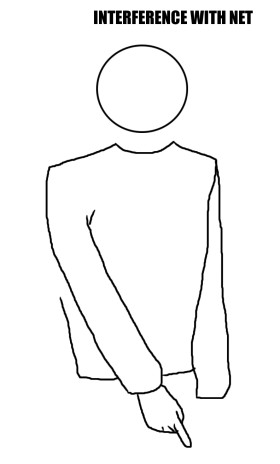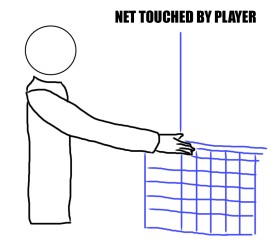
Catch
The complaint: “That was a lift!”
First of all, “lift” is not a word in the rulebook; there’s no such thing in volleyball. The rules state that it is a fault if the player catches or throws the ball (or both). If the ref determines that the ball is caught or thrown, the whistle blows. Otherwise, it’s a non-call.
A front-row player attacks a ball after the libero sets the ball. The whistle blows and the ref calls an illegal attack. Everybody screams: “Why did you call that? She’s a front-row player.”
Yes, she is a front-row player. But when the libero sets the ball with finger action inside the 3-meter line, the next contact can’t be attacked while the ball is completely above the height of the net. To legally return the ball to the opponents, the ball must be partially below the height of the net when it’s contacted.

Interference with net
A player crosses the centerline onto the opponent’s court, but there is no whistle.
You can cross the centerline if part of your body is still in contact with your own side of the court, as long as you’re not interfering with play or creating a safety issue. This is a new rule this year. In the past, you weren’t allowed to have your foot entirely over the centerline. Now, when players cross the centerline, it might be legal – as long as the referees determine there is no interference or safety concern.

Net touched by player
“He hit the net!”
A player doesn’t get whistled for touching the net unless interference occurs. What’s the definition of interference? There are a few criteria:
1. If a player contacts the top tape while playing a ball; or
2. If the net contact interferes with the opponent’s right to play the ball; or
3. If the player gains an advantage by contacting the net; or
4. If the player takes support from the net.

double contact
A player receives the serve with an ugly-looking double contact, but there is no call made.
This one is pretty easy. Multiple contacts, no matter how ugly, are allowed on serve receive. The contact is only illegal if the ref judges that the ball has been caught or thrown, provided it was a single attempt to play the ball.
For similar articles, read Education series.
Also check out Latest news.